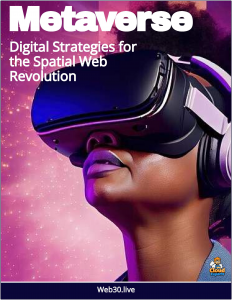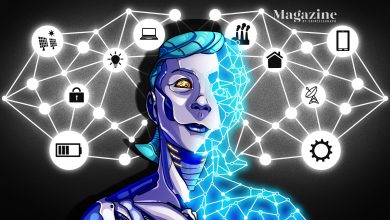 Neal Stephenson, who coined the term “metaverse” in his 1992 novel Snow Crash, has shared a variety of thoughts about its future, reflecting both his original vision and his evolving perspective as technology progresses.
Neal Stephenson, who coined the term “metaverse” in his 1992 novel Snow Crash, has shared a variety of thoughts about its future, reflecting both his original vision and his evolving perspective as technology progresses.
His beliefs are informed by his work as a science fiction author, his experience in the tech industry, and his current efforts with Lamina1, a blockchain company he co-founded to shape an “open metaverse.”
Stephenson envisions the metaverse as a richly interactive, three-dimensional virtual space with a strong social component and a unified geography—distinct from a fragmented “3D internet.”
He believes it should not be tied to specific hardware like VR headsets, emphasizing accessibility across devices, including traditional screens, where the largest user base currently exists. He sees the metaverse evolving from gaming, which he considers the “economic and technological engine” driving its development, due to the industry’s expertise in 3D environments and its ability to engage millions through entertainment.
He advocates for an open metaverse, one that avoids the control of large corporations like Meta, which he fears could create “walled gardens” reminiscent of the dystopian elements in Snow Crash. Through Lamina1, he aims to build a decentralized infrastructure using blockchain technology to empower creators, ensuring they can build, own, and monetize their work sustainably.
This vision includes interoperability—allowing users to move between virtual worlds with their identities and assets intact—though he acknowledges practical challenges, like mismatched game mechanics, as noted by others in the field.
Stephenson is cautiously optimistic about the metaverse’s potential to “enrich billions of lives” but stresses that its success hinges on delivering compelling experiences worth adopting. He believes this is “pretty hard” to achieve, suggesting mainstream adoption may be distant until quality content emerges. He also sees AI playing a role, potentially enhancing creativity and interaction, though he’s expressed broader concerns about technology’s societal impacts, like social fragmentation, which he worries about more than the metaverse itself.
Rather than predicting a singular future, Stephenson prefers to enable possibilities, drawing from his reluctance to dictate what the metaverse “ought to be.” He views it as neither inherently utopian nor dystopian—its outcome depends on human choices. His focus with Lamina1 reflects a desire to recapture the internet’s early openness, lost in the Web2 era, and to foster a creator-driven ecosystem that balances innovation with ethical considerations like fair compensation and environmental sustainability.
In summary, Stephenson believes the metaverse’s future lies in its openness, accessibility, and ability to deliver meaningful experiences, rooted in gaming and blockchain, while remaining wary of corporate dominance and technical hurdles. His approach is less about prophecy and more about actively shaping a decentralized, creator-centric virtual world.



